#mythunga
Explore tagged Tumblr posts
Text
Mythunga, a cretaceous pterosaurLinks and propaganda Mammalodon, a cenozoic baleen whale from before baleen Mandageria, a devonian lobe-finned fish Megalibgwillia, a big cenozoic echidna Meiolania, a cenozoic horned tortoise Minmi, a cretaceous armoured dinosaur Murgonemys, a cenozoic soft-shelled turtle Murrayglossus, an even bigger cenozoic echidna Muttaburrasaurus, a cretaceous ornithopod dinosaur Mythunga, a cretaceous pterosaur
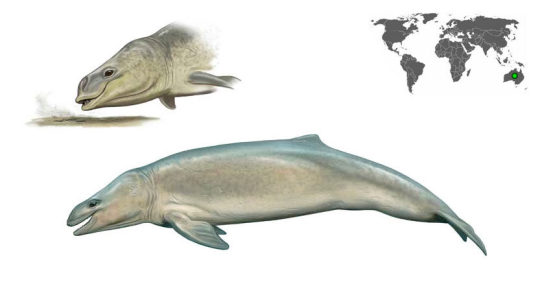


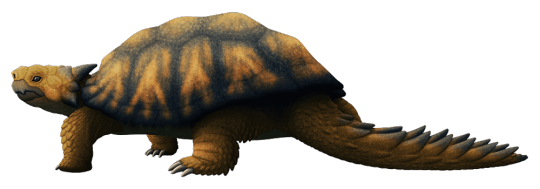

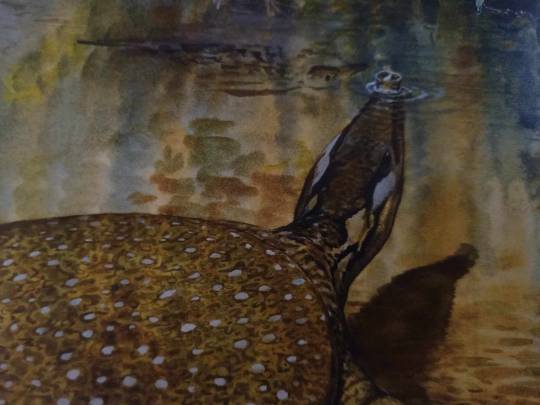

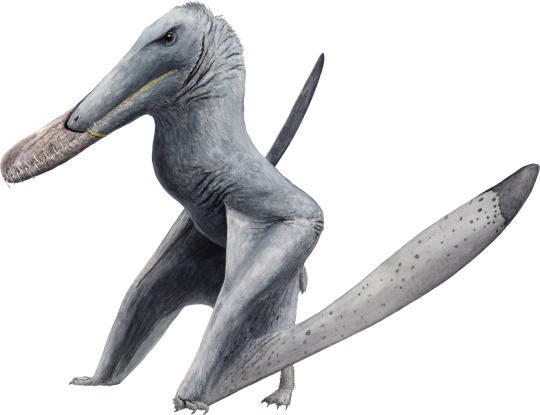
#please reblog#palaeoblr#australian fossil alphabet thing#dinosaur#megafauna#mammalodon#mandargeria#megalibgwilia#meiolania#murgonemys#murrayglossus#muttaburrasaurus#mythunga#minmi
34 notes
·
View notes
Text
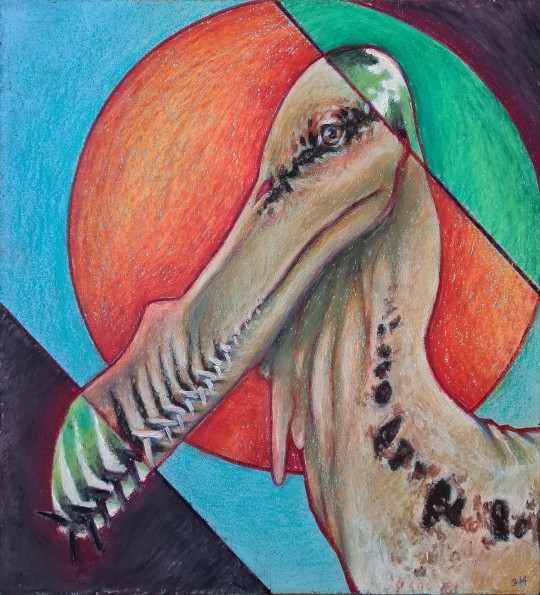
Mythunga camara, oil pastel on wooden panel.
Mythunga is Australia's only named pterosaur! I had no idea we were so lacking in flying reptiles until doing some research for this drawing.
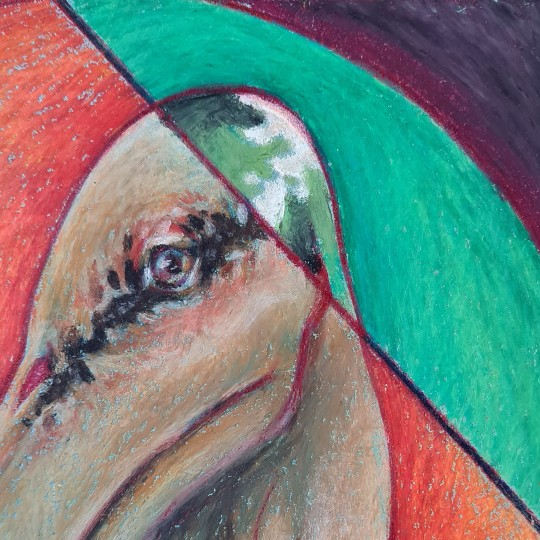
I tried to go for an inverted colour scheme beyond the diagonal lines, no idea if it's the right colours lol.
#paleoart#dinosaurs#pterosaurs#australian dinosaurs#oil pastel#pastel painting#crayon art#traditional art#art#drawing#original art#animal art#my art
120 notes
·
View notes
Text
Oopsie forgot to post for a while
Here’s some stuff I’ve worked on (newest first)
I’ll post some of my random sketches later also
Thalassotitan

An unfortunate Rhinodicynodon gracile lost at sea, clinging to a log

Tyrannosaurus rex skull

Stegoceras checking for danger

Triceratops sketch

Mythunga enduring a thunderstorm

Fasolasuchus enjoying the shallow water

And me remaking my first ever digital piece after 1 year

Hope you all like them
#art#digital art#dinosaur#drawing#paleoart#paleoblr#paleontology#procreate#sciart#illustration#sketch#reptile#paleoillustration#paleo#palaeoart#palaeontology#ceratopsian#pterosaur#dino art#dinosaur art#artwork#my art
100 notes
·
View notes
Note
Spirits of the Ice Forest (Part 1): With the discovery of Kulindadromeus & the possibility that it got cold during winter in Antarctica during the Cretaceous, would it be safe to give Leallynasaura a covering of feathers? I was thinking of a summer coat that camouflages it in the forest & a winter coat that camouflages it in the snow.
Spirits of the Ice Forest (Part 2): Since we now know that the "Polar Allosaur" is part of the Megaraptora Clade, what type of Australian Megaraptor should I choose: Australovenator, Rapator or Lightning Claw? Also, to keep the dialogue similar to the original but also updated, I’ll state that they’re distantly related to the large carnosaurs of the jurassic & while they’re rare in the northern hemisphere, they’re more commonly found in the southern continents.
Spirits of the Ice Forest (Part 3): The unidentified pterosaurs seen migrating will either be Aussiedraco or Mythunga. Finally, the Steropodon (performed by a Coati) will be replaced with a more accurate animatronic/CGI Model.
The presence of filamentous integument in Kulindadromeus and Tianyulong certainly opens up the possibility of it being present in Leaellynasaura. Considering its small size and the local climate, some might even consider it likely.
The “polar allosaur” was based on an isolated ankle bone (NMV Pl50070) from the Wonthoggi Formation. NMV Pl50070,Rapator, and the Lightning Ridge megaraptoran don’t share any overlapping material, so it’s currently impossible to tell whether they are the same species or not.However, NMV Pl50070 is very similar, though not identical to, the same bone in Australovenator and some have considered it “Australovenator sp.” Strictly speaking though, most of these megaraptorans are not known from the same time: NMV Pl50070is from the Aptian, Rapator and the Lightning Ridge megaraptoran are from the Albian, and Australovenator is from the Cenomanian. Given that Leaellynasaura was from the Albian, Rapator and/or the Lightning Ridge megaraptoran (if they’re not the same animal) are likely the best choices for your purposes.
4 notes
·
View notes
Link
0 notes
Text
A fossil of a ginormous flying reptile has just been discovered in Australia
https://sciencespies.com/nature/a-fossil-of-a-ginormous-flying-reptile-has-just-been-discovered-in-australia/
A fossil of a ginormous flying reptile has just been discovered in Australia
The most significant pterosaur fossil ever discovered in Australia has been unearthed in the Winton area of central western Queensland.
The newly discovered species, which my colleagues and I have named Ferrodraco lentoni, had a wingspan of about 4 metres (13 feet). It lived around 96 million years ago, and was surprisingly similar to other pterosaurs from England, suggesting that these huge flying reptiles could traverse the globe with relative ease.
Pterosaurs are quite rare in the fossil record, as their bones are hollow and the outer bone in most instances is only 1 millimetre thick. Only 15 pterosaur specimens have ever been scientifically described from Australia, many of them incomplete.
Until recently, only two species of Australian pterosaur had been described: Mythunga camara and Aussiedraco molnari, both based on fossil skull fragments.
Although more complete fossils of similar pterosaurs are known from Brazil and China, until this discovery, our understanding of the pterosaurs that lived in Australia during the Cretaceous period was limited.
The new pterosaur specimen, unveiled today in the journal Scientific Reports, includes a partial skull, five partial neck vertebrae, and bones from both the left and right wings.
This particular individual represents a fully grown adult, based on the fusion seen in several bones. Judging by its wing bones and the dimensions of similar pterosaurs, Ferrodraco would have had a wingspan of about 4 metres, with a skull probably reaching 60 centimetres (24 inches) in length. It is likely that it ate mainly fish.
The genus name Ferrodraco refers to the fact that this winged reptile was found preserved in ironstone. And the species name lentoni honours former Winton Shire mayor Graham “Butch” Lenton, in recognition of his service to the community. The Winton area has within recent decades produced several well-preserved dinosaur fossils.
Ferrodraco lived 96 million years ago, around lake and river systems surrounded by conifer forests. Based on other fossil evidence, this pterosaur shared its environment with several dinosaurs including the sauropods Diamantinasaurus and Savannasaurus, theropods such as Australovenator, ornithopods and ankylosaurs. Competing with Ferrodraco for fish in the freshwater river systems were crocodylomorphs (such as Isisfordia) and plesiosaurs.
(Pentland et al., Scientific Reports, 2019)
Game-changer
The Ferrodraco specimen was discovered by Winton grazier Bob Elliott in April 2017 when he was spraying weedkiller along the banks of a creek on Belmont Station. It’s not the first major fossil find on Belmont Station – the unique sauropod dinosaur Savannasaurus elliottorum was discovered just 10 kilometres (6 miles) from the pterosaur site.
Unlike other fossil sites in the Winton area, the pterosaur remains were found in the banks of a creek and had likely been exposed to the elements for several years. One bone from the wing had even been kicked away from the main site by livestock travelling through the creek. Had the bones not been infiltrated by iron-rich fluids, which ultimately became ironstone, these precious fossils would have been lost to erosion many years ago.
Unlike many other fossils, the bones were covered by a thin layer of rock. This meant that Ferrodraco had an unusually quick journey (by palaeontological standards) from discovery to scientific publication.
Preparation of the specimen was finished within a week by preparator Ali Calvey. Even before the bones had been fully prepared, our team was able to make detailed observations and determine which family of pterosaurs this specimen belonged to.
Surprisingly, Ferrodraco shows closer ties with similarly aged pterosaurs from England than it does to those from South America. This suggests that these pterosaurs, collectively known as ornithocheirids, could easily fly across oceans and disperse between continents.
This idea has been put forward by other palaeontologists, but the dearth of material from Australia had made it difficult to verify until now.
Ferrodraco has changed the game in that regard, demonstrating that it was living at least as recently as its Northern Hemisphere ornithocheirid cousins. In fact, it might represent one of the geologically youngest ornithocheirids ever found.
Although more work needs to be done to demonstrate this, Ferrodraco is nevertheless one of the most important pterosaur specimens ever found in Australia.
Adele Pentland, PhD candidate, Swinburne University of Technology.
This article is republished from The Conversation under a Creative Commons license. Read the original article.
#Nature
0 notes
Text
Mythunga
Mythunga is a genus of pterodactyloid pterosaur from the late Early Cretaceous of Australia. It is known from a partial skull found in marine rocks of the Albian-age Toolebuc Formation near Hughenden, Queensland. Only the snout and part of the jaws are known. The teeth in the lower jaw were relatively tall (half the depth of the supporting bone), and the teeth toward the rear of the known material were widely spaced. The snout apparently was hollow, with a supporting internal boxwork of bone. Mythunga was described by Ralph Molnar and R. A. Thulborn in 2008, and provisionally thought to be related to plesiomorphic, and thus possibly basal, pterodactyloids. The type species is M. camara. More details Android, Windows
0 notes
Text
Aussiedraco
Aussiedraco is a genus of basal ornithocheiroid pterodactyloid pterosaur from the early Cretaceous of Australia. Aussiedraco is known from holotype QM F10613, a partial mandibular symphysis housed at the Queensland Museum, recovered from rocks of the Toolebuc Formation, about 70 km east of Boulia, western Queensland, dating to Albian stage. It was named by Alexander W.A. Kellner, Taissa Rodrigues and Fabiana R. Costa in 2011 and the type species is Aussiedraco molnari. The generic name is derived from "Aussie", a shortened form of Australian, and "draco", from Latin meaning dragon. The specific epithet honours Ralph E. Molnar, who first described the specimen in 1980. The symphysis fragment is 88 millimetres long and very straight and narrow, with a lanceolate not-expanded tip and triangular cross-section. It lacks a keel or crest and is convex on top, with a median narrow deep groove not reaching the tip, but flat at the bottom. As far as can be judged from the empty elliptical tooth-sockets, the lower jaws carry at least five pairs of teeth, which are rather large and become more outwards inclining and procumbent towards the front. Aussiedraco is estimated to have been smaller in size than Mythunga, a pterosaur from the same formation. Kellner e.a. assigned Aussiedraco to the Pteranodontoidea, a clade roughly containing the same species as the Ornithocheiroidea sensu Unwin. Aussiedraco would be closely related to the Anhangueridae. More details Android, Windows
0 notes